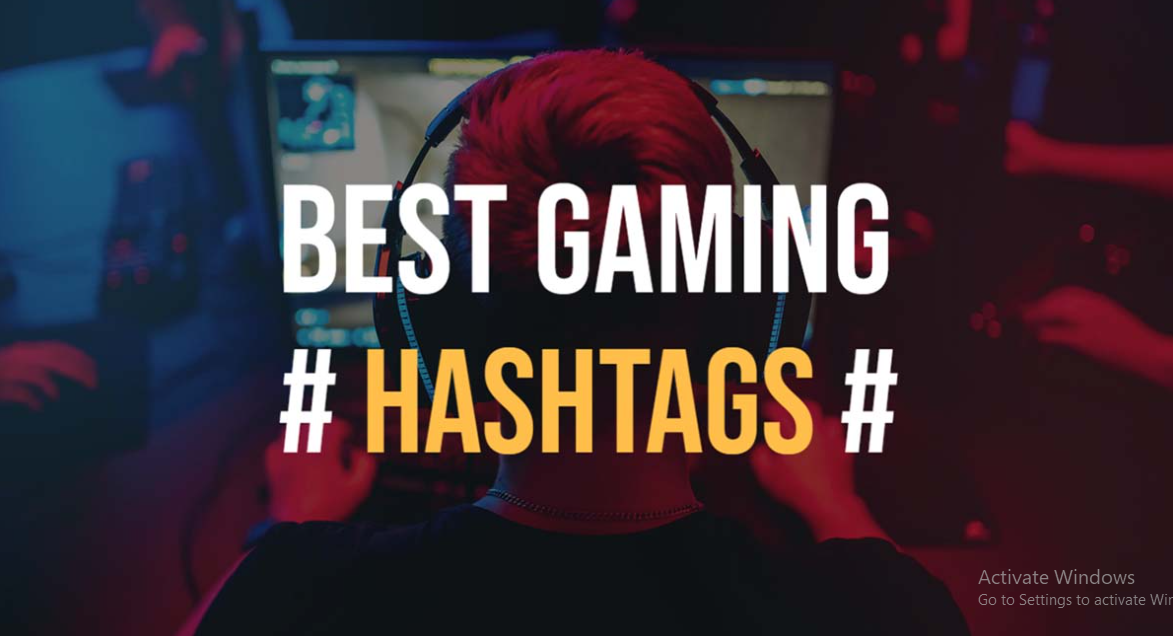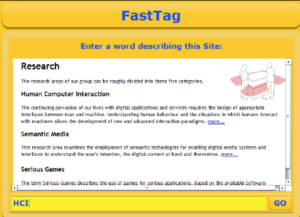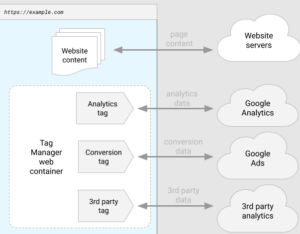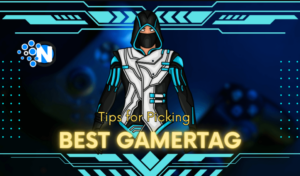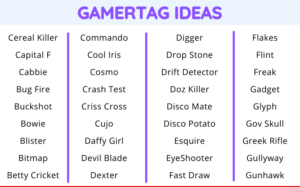samwyche.com – In the vast realm of online gaming, standing out from the crowd can be a daunting task. With millions of players and content creators showcasing their skills and creativity, it’s crucial to have strategies that elevate your visibility and engagement. One powerful tool in your arsenal is the strategic use of gaming tags. These digital labels not only organize content but also pave the way for reaching the right audience and enhancing your gaming experience.
In this comprehensive guide, we’ll delve into the world of gaming tags, exploring what they are, why they matter, and how to choose the best ones for your gaming content. By the end, you’ll have the knowledge and insights needed to level up your game and make a mark in the ever-evolving gaming landscape. Let’s embark on this exciting journey of unlocking the secrets to the best gaming tags and maximizing your fun and visibility in the gaming universe.
Understanding Best Gaming Tags
Gaming tags, often referred to as hashtags or metadata, are the digital breadcrumbs that lead gamers and viewers to your content. They are short, descriptive keywords or phrases that are associated with your gaming content. These tags serve several essential functions:
1. Discoverability: Gaming tags are your ticket to being discovered by a broader audience. When users search for or click on a specific tag, they’re presented with a list of content related to that tag. Using the right tags makes your content visible to users interested in those topics.
2. Categorization: Tags help platforms organize and categorize content. They ensure that your gaming content appears in the right sections or recommendations, making it more likely for the right audience to find you.
3. Audience Engagement: Effective gaming tags can attract the right audience—those who share your gaming interests. This can lead to more engagement, comments, shares, and followers.
4. SEO Benefits: On platforms like YouTube and Twitch, tags play a crucial role in search engine optimization (SEO). Well-chosen tags can improve your content’s ranking in search results, increasing its discoverability.
5. Trend Recognition: Tags often reflect current gaming trends and popular titles. By using trending tags, you can tap into the buzz and attract viewers interested in the latest games and developments.
It’s essential to understand that the effectiveness of gaming tags can vary from one platform to another. For instance, Twitch uses tags differently than Instagram, and YouTube has its own tag system. In the next sections, we’ll explore how gaming tags work on different platforms and provide insights into using them effectively. But first, let’s dive deeper into why choosing the right gaming tags matters in the gaming content creation world.
Research and Analysis
Selecting the best gaming tags for your content isn’t just a matter of random guesswork. It requires careful research and analysis to maximize their effectiveness. Here’s how you can go about it:
- Know Your Audience: Before diving into tag research, it’s crucial to understand your target audience. What games do they love? What gaming trends are they following? Knowing your audience’s interests and preferences will guide your tag selection.
- Competitor Analysis: Look at what tags successful gaming content creators in your niche are using. Tools like social media analytics or third-party tag research platforms can help identify which tags are driving traffic to their content.
- Keyword Research: Use keyword research tools to identify relevant gaming keywords and phrases. Look for high-search-volume keywords related to your content. Tools like Google’s Keyword Planner or specialized SEO tools can be incredibly helpful.
- Platform-Specific Insights: Understand how tags function on the specific platform you’re using. Each platform has its own tagging system, so research the guidelines and recommendations provided by the platform.
- Trending Tags: Keep an eye on gaming trends. Follow gaming news, communities, and social media to identify what games, events, or topics are currently popular. Incorporate trending tags into your content when relevant.
- Tag Relevance: Tags should be directly related to the content of your video or stream. Using irrelevant tags may lead to a negative user experience and hurt your credibility.
- Balanced Selection: Don’t overload your content with tags. Balance is key. Using too few tags may limit discoverability, while using too many may look spammy. Each platform has its recommended number of tags, so adhere to those guidelines.
- Long-Tail Tags: Alongside broad tags, consider using long-tail tags—specific, niche keywords that may have lower competition but can still attract an engaged audience.
- Analyze Results: After using tags in your content, monitor their performance. Many platforms offer analytics tools that show which tags are driving traffic, views, and engagement. Use this data to refine your tagging strategy.
By conducting thorough research and analysis, you can fine-tune your gaming tag selection to maximize your content’s visibility and reach the right audience. In the next sections, we’ll explore how to apply these insights on different gaming platforms, so you can make the most of your gaming tags.
Platform-Specific Tagging
Understanding how gaming tags function on different platforms is essential for optimizing your content’s discoverability. Here’s a closer look at how tags work on some of the most popular gaming platforms:
1. Twitch
- Category Tags: Twitch uses category tags to classify streams based on the game being played. Use the appropriate category tag to ensure your stream appears when users browse specific games.
- Community Tags: Community tags help define your stream’s content further. These tags can include descriptors like “Casual,” “Speedrun,” or “Competitive.” Choose community tags that accurately represent your content style.
- Additional Tags: Twitch allows streamers to add up to five additional tags to provide more context about their stream. Use these tags strategically to highlight key elements of your content or special features.
2. YouTube
- Video Tags: On YouTube, video tags are critical for SEO and discoverability. Include tags related to your video’s content, game title, and relevant gaming trends. Be specific and use both short-tail and long-tail tags.
- Channel Tags: Channel tags describe your overall content and niche. These tags help YouTube understand your channel’s focus, which can lead to better recommendations to interested viewers.
- Trending and Seasonal Tags: Keep an eye on trending gaming topics and seasonal events. Incorporating these tags in your video descriptions can boost visibility during relevant periods.
3. Instagram
- Hashtags: Instagram relies heavily on hashtags for content discovery. Research popular gaming hashtags within your niche and add them to your gaming-related posts. Use a mix of broad and niche-specific tags.
- Tag Limits: Instagram allows up to 30 hashtags per post. While you can use the maximum, it’s more important to focus on the relevance and quality of your tags rather than quantity.
4. Twitter
- Trending Tags: On Twitter, trending gaming tags can rapidly boost your content’s visibility. Monitor trending topics and participate in relevant conversations by using these tags in your tweets.
- Community Tags: Engage with gaming communities and use their specific hashtags. These tags can help you connect with like-minded gamers and increase your content’s reach.
- Content-Specific Tags: Create custom tags related to your gaming content or personal branding. Promote these tags consistently to build a dedicated following around your content.
Understanding these platform-specific tagging strategies will empower you to make the most of each platform’s tagging features. Remember that using the right tags in the right way can significantly impact your content’s discoverability and success within the gaming community.
Best Practices for Gaming Tags
Now that you understand the importance of gaming tags and how they work on different platforms, let’s dive into some best practices for selecting and using them effectively:
- Relevance is Key: Tags should be directly related to your gaming content. Use tags that accurately represent the game you’re playing, the content you’re producing, or the topics you’re discussing.
- Mix Broad and Specific Tags: Balance your tag selection by using a mix of broad and specific tags. Broad tags can attract a larger audience, while specific tags can help you connect with a niche community.
- Research Trending Tags: Stay up-to-date with gaming trends and incorporate relevant trending tags into your content. This can help you ride the wave of popularity and attract viewers interested in the latest gaming developments.
- Long-Tail Keywords: Don’t forget about long-tail keywords and phrases. These can be less competitive and attract an engaged audience interested in specific aspects of the game or topic.
- Platform Guidelines: Follow each platform’s guidelines for tag usage. Pay attention to tag character limits, recommended tag numbers, and any restrictions on certain tags.
- Avoid Spammy Tagging: Don’t overload your content with tags that are irrelevant or barely related to your content. This can come across as spammy and harm your credibility.
- Experiment and Analyze: Try different tags in your content and monitor their performance. Analytics tools on platforms can show you which tags are driving views and engagement. Use this data to refine your tagging strategy.
- Consistency: If you have custom or branded tags, use them consistently across your content. This helps build recognition and community around your brand.
- Localize Tags: If your content appeals to an international audience, consider using tags in multiple languages. This can broaden your reach to non-English-speaking gaming communities.
- Update Tags Over Time: As gaming trends change and your content evolves, revisit and update your tags. Keeping them relevant ensures your content stays discoverable.
- Combine Tags with Descriptions: Incorporate tags into your video or post descriptions naturally. This can provide context to viewers and improve SEO.
- User Engagement: Encourage user engagement with your tags. Ask viewers to use specific tags when discussing your content or participating in related discussions.
By following these best practices, you can harness the full potential of gaming tags to boost your content’s discoverability, engage with your target audience, and establish a strong online gaming presence. Remember that tag optimization is an ongoing process, so be prepared to adapt and refine your strategy as your gaming content evolves.
Best Gaming Tags Categories
Certainly! Here’s a list of popular gaming tag categories that content creators often use to categorize and describe their gaming content:
- Game Titles: Tags related to the specific games you’re playing or discussing, such as “#Fortnite,” “#Minecraft,” or “#CallOfDuty.”
- Game Genres: Tags that identify the genre of the game, like “#RPG,” “#FPS,” or “#MOBA.”
- Gaming Platforms: Tags for the platforms the games are available on, such as “#PCGaming,” “#PlayStation,” or “#Xbox.”
- Content Type: Tags that describe the type of content you’re creating, like “#Let’sPlay,” “#GameReview,” or “#GamingNews.”
- Community Tags: Tags that connect you with specific gaming communities, such as “#GamersUnite,” “#TwitchCommunity,” or “#GamingFamily.”
- Competitive Gaming: Tags for competitive gaming content, like “#Esports,” “#Tournament,” or “#GamingCompetition.”
- Gaming Events: Tags for gaming events, conventions, or in-game events, such as “#E3,” “#BlizzCon,” or “#SeasonPass.”
- Gaming Hardware: Tags related to gaming equipment and accessories, like “#GamingSetup,” “#VRGaming,” or “#GamingMouse.”
- Gaming Challenges: Tags for content that involves gaming challenges or feats, such as “#Speedrun,” “#NoDamageRun,” or “#100PercentCompletion.”
- Gaming Tips and Tutorials: Tags for instructional content, like “#GameTips,” “#TutorialTuesday,” or “#GamingGuide.”
- Gaming Memes and Humor: Tags for gaming-related humor and memes, such as “#GamerHumor,” “#GamingMemes,” or “#EpicFail.”
- Gaming News and Updates: Tags for sharing the latest gaming news and updates, like “#GamingNews,” “#PatchNotes,” or “#NewContent.”
- Cosplay and Fan Art: Tags for showcasing gaming-related cosplay and fan art, such as “#Cosplay,” “#FanArtFriday,” or “#GamingCosplay.”
- Game Development: Tags related to game development and industry insights, like “#IndieGameDev,” “#GameDesign,” or “#GamingIndustry.”
- Streaming and Let’s Play: Tags for live streaming and let’s play content, like “#LiveStream,” “#TwitchStream,” or “#LetsPlay.”
- Gaming Challenges: Tags for content that involves gaming challenges or feats, such as “#Speedrun,” “#NoDamageRun,” or “#100PercentCompletion.”
- Retro Gaming: Tags for vintage and retro gaming content, like “#RetroGaming,” “#ThrowbackThursday,” or “#ClassicGames.”
- Game Lore and Storytelling: Tags for exploring the lore and storytelling aspects of games, such as “#GameStory,” “#GameLore,” or “#GamingNarrative.”
- In-Game Communities: Tags for specific in-game communities or guilds, like “#WorldOfWarcraftGuild,” “#FortniteSquad,” or “#Destiny2Clan.”
- Gaming Charity and Fundraising: Tags for charity gaming events and fundraisers, such as “#CharityGaming,” “#ExtraLife,” or “#GamingForGood.”
These tag categories can help you categorize your gaming content effectively, reach your target audience, and connect with gaming communities that share your interests. When choosing tags, consider which categories best align with the content you create and the audience you want to engage with.
Conclusion
Gaming tags are the power-ups that can take your gaming content from obscurity to the top of the leaderboards. They are the keys to unlocking your gaming content’s full potential and connecting with a vibrant online gaming community. In this journey through the world of gaming tags, we’ve explored why they matter, how they work on different platforms, and the best practices for making them work for you.
As you embark on your gaming content creation journey or strive to level up your existing presence, never underestimate the potential of well-chosen gaming tags. They are your companions in the world of online gaming, guiding you towards greater visibility, engagement, and gaming greatness.
So, whether you’re a Twitch streamer battling epic foes, a YouTube gamer exploring vast virtual worlds, or an Instagram gaming influencer showcasing your adventures, remember that the right gaming tags can make all the difference. Use them wisely, adapt to changing trends, and keep your gaming content fresh and exciting. The gaming world is waiting for your next move—make it legendary with the power of gaming tags. Good luck, and may your gaming content shine brighter than ever!
